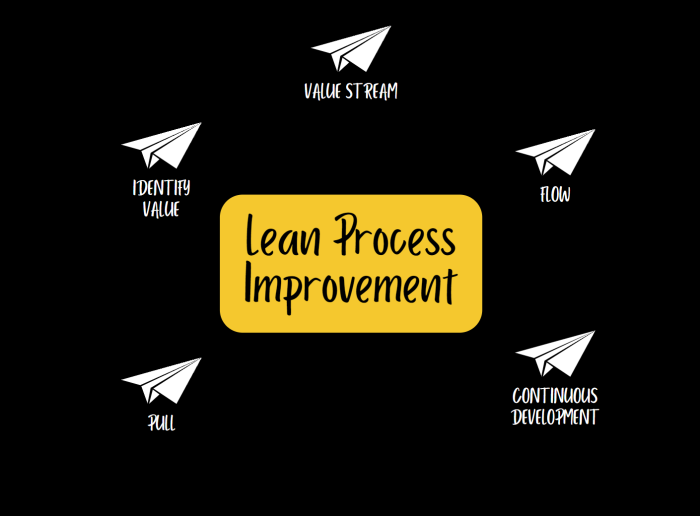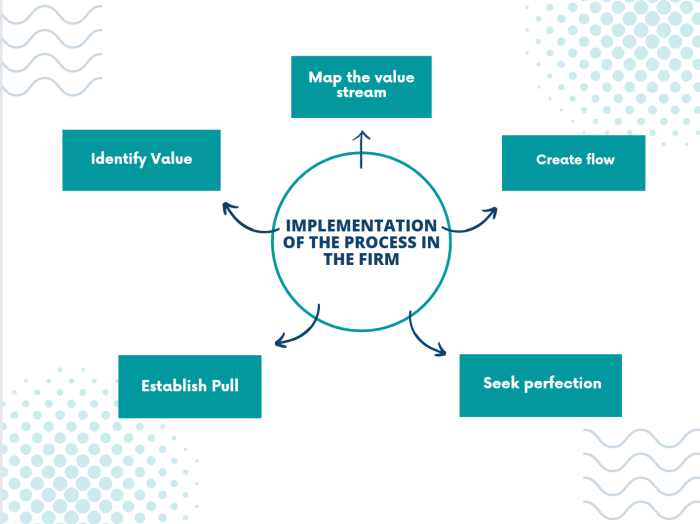
 Data Structure
Data Structure Networking
Networking RDBMS
RDBMS Operating System
Operating System Java
Java MS Excel
MS Excel iOS
iOS HTML
HTML CSS
CSS Android
Android Python
Python C Programming
C Programming C++
C++ C#
C# MongoDB
MongoDB MySQL
MySQL Javascript
Javascript PHP
PHP
- Selected Reading
- UPSC IAS Exams Notes
- Developer's Best Practices
- Questions and Answers
- Effective Resume Writing
- HR Interview Questions
- Computer Glossary
- Who is Who
Lean Process: Key Concepts, Applications, Benefits
Today's competitive economy requires businesses to offer a high level of value. From quality products to unparalleled customer care, achieving the best business possible is the end goal. And with lean process solutions, those objectives are realized through better efficiency - for all parties involved.
Lean processes have been around for years. The Toyota Production System, first introduced in the 1930s, has been used as the lean process solution for decades.
Many agencies are focused on the number of hours they put in. But there needs to be better for the work and the clients. This is why we prefer a 10-20% efficient process. With Lean, you'll see 50% faster turnaround, better information systems, and more efficient customer service than other agencies.
What do you understand by the Lean Process?
The principle of less is more helps to improve efficiency and reduce unnecessary practices that lead to poor business results. Lean manufacturing principles can be applied in any business for success.
Lean manufacturing benefits are plentiful. Not only does it help eliminate waste in manufacturing processes and make products more valuable for customers, but a lean procedure also helps to lower operational expenses and increase efficiencies, which allows businesses to use that extra time on customer-service efforts or maximize their bottom line.
The idea is simple: you cut out the products, services, and practices that don't offer any value to your customers. Ultimately, you will make their experience more streamlined by freeing up their time for shopping, not just for making a purchase but also for fulfilling that purchase.
Lean Process Improvement

When setting goals for your business, it's crucial to understand the fundamental theories of lean method improvement ?
Identify Value
If you're going to improve the efficiency of your company, it all starts with identifying customer values. What do your customers care about? Identifying these values helps determine where you can cut back on extraneous activities and costs within your sales cycles, manufacturing process, etc.
Value Stream
The mapping is valuable for showing the gaps in your business process. It's worth creating a visualized value stream map to understand all aspects of the purchase process and optimize existing processes.
Flow
After you've figured out what your customers want and delivered it, you should think about the work process. The customer has had a great experience, so you need to concentrate on efficiency.
Pull
Making your business leaner yet more efficient with an effective pull system is wise. With an efficient pull system, production only begins when the order has been placed, so you're still saving costs from storing and maintaining excess inventory.
Continuous Development
Lean manufacturing processes are ever-changing. They require commitment, support, and buy-in from all departments to succeed. There are six steps in a lean process.
To understand the 5 parts of the lean business, consider using lean manufacturing to increase the flow.
Implementation of the Process in the Firm

Implementing the lean process into an organization is a never-ending practice. It's not just one event and cannot be done by one department - every department needs to work together if the workflow is to be successful. Maintaining a successful workflow will require identifying inefficiencies and addressing them, measuring those changes to see the improvements, and then repeating them.
Here are some lean management tools that can help you with your lean process solution ?
In addition to a lean process, several tools can be used to help you achieve your goals. These range from the best management tools to analytics software ?
Kanban
Kanban will help you maintain better control over your manufacturing process. By focusing on creating more worth for the customer and not increasing costs, you'll see improvements in your business.
Kaizen
This tool distinguishes the continuous work of making minor daily improvements across all aspects of your business. It's not about massive company-wide changes - it's about identifying incremental changes you can make daily that will gradually increase efficiency and get more people involved. The result? A more satisfying workplace and happier employees when you are using this tool.
Poka-Yoke
In Japanese, Poka-Yoke refers to "error prevention." That is the process being emphasized in this Lean manufacturing method. It should be evident that it is a practical and pragmatic approach to quality control through multiple planning and process improvement stages. This includes defining, measuring, analyzing, improving, and controlling Poka-yoke on every level of your production process.
WIP Limits
Knowing where your team is at during each procedure phase is important. If a bottleneck appears, you'll be able to resolve the issue before it becomes a problem for your team and your business. Using WIP limits will help identify potential problem regions and bottlenecks so that everything continues to run smoothly to meet deadlines.
Six Sigma
Lean manufacturing is all about improving your quality control standards. Using Six Sigma tools and deploying them throughout your process, you can identify defects in your products and figure out the cause of the issue to increase the workflow and save time.
Lean Management Applications
When you use Lean principles in your business, it might be time to consider JIT inventory management. This can be a great choice for companies that have enough flexibility to meet on-demand needs and minimize the risk of carrying inventory that's not making money. However, it can take a lot of work to satisfy customer demand and manage inventory with this process.
In any industry, there is always the risk of a supply chain disruption. Organizations in sectors like manufacturing should carefully evaluate their supply chains and minimize the potential for disruptions. For example, a company might be working on a JIT strategy when it realizes its critical suppliers will have to suspend operations. It's important to have a backup plan in place so the company can still produce its final product. With a just-in-time inventory management strategy, suppliers will ship goods as they're needed. This will help you hold less inventory and increase the speed of your inventory turnover.

